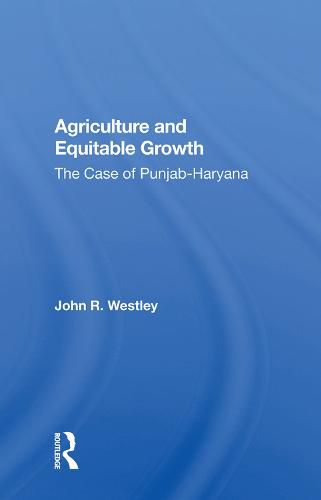Readings Newsletter
Become a Readings Member to make your shopping experience even easier.
Sign in or sign up for free!
You’re not far away from qualifying for FREE standard shipping within Australia
You’ve qualified for FREE standard shipping within Australia
The cart is loading…






Specifying those conditions under which low-income countries might be able to achieve equitable growth and reduce mass poverty is a major issue in development theory and policy. Given the preponderant role of the agricultural sector as a source of income and employment in the early stages of development, it is not surprising that much of the theorizing about equitable growth is concentrated on the relationship between agricultural growth and poverty reduction. The adjacent Indian states of Punjab and Haryana have been remarkably successful in achieving rapid agricultural growth and in reducing significantly the proportion of the population below the poverty line. The author uses the case of Punjab-Haryana to test two competing theories of equitable growth: the idea that a sectoral shift toward agriculture must be a key component in planning and the converse approach that shifts in agricultural policies, programs, and investments will be ineffective in reducing poverty unless accompanied by a major structural shift toward a more equal distribution of land and a more broadly based control of the institutions supporting agriculture. The experience of Punjab-Haryana generally suggests that the rural bias of agricultural policies and programs despite the absence of a structural shift in land ownership has reduced rural poverty.
$9.00 standard shipping within Australia
FREE standard shipping within Australia for orders over $100.00
Express & International shipping calculated at checkout
Specifying those conditions under which low-income countries might be able to achieve equitable growth and reduce mass poverty is a major issue in development theory and policy. Given the preponderant role of the agricultural sector as a source of income and employment in the early stages of development, it is not surprising that much of the theorizing about equitable growth is concentrated on the relationship between agricultural growth and poverty reduction. The adjacent Indian states of Punjab and Haryana have been remarkably successful in achieving rapid agricultural growth and in reducing significantly the proportion of the population below the poverty line. The author uses the case of Punjab-Haryana to test two competing theories of equitable growth: the idea that a sectoral shift toward agriculture must be a key component in planning and the converse approach that shifts in agricultural policies, programs, and investments will be ineffective in reducing poverty unless accompanied by a major structural shift toward a more equal distribution of land and a more broadly based control of the institutions supporting agriculture. The experience of Punjab-Haryana generally suggests that the rural bias of agricultural policies and programs despite the absence of a structural shift in land ownership has reduced rural poverty.